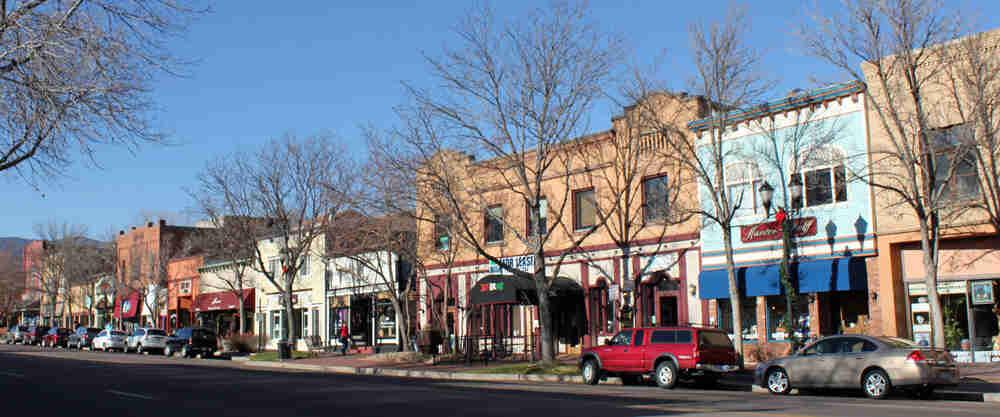Colorado Springs
Full Article
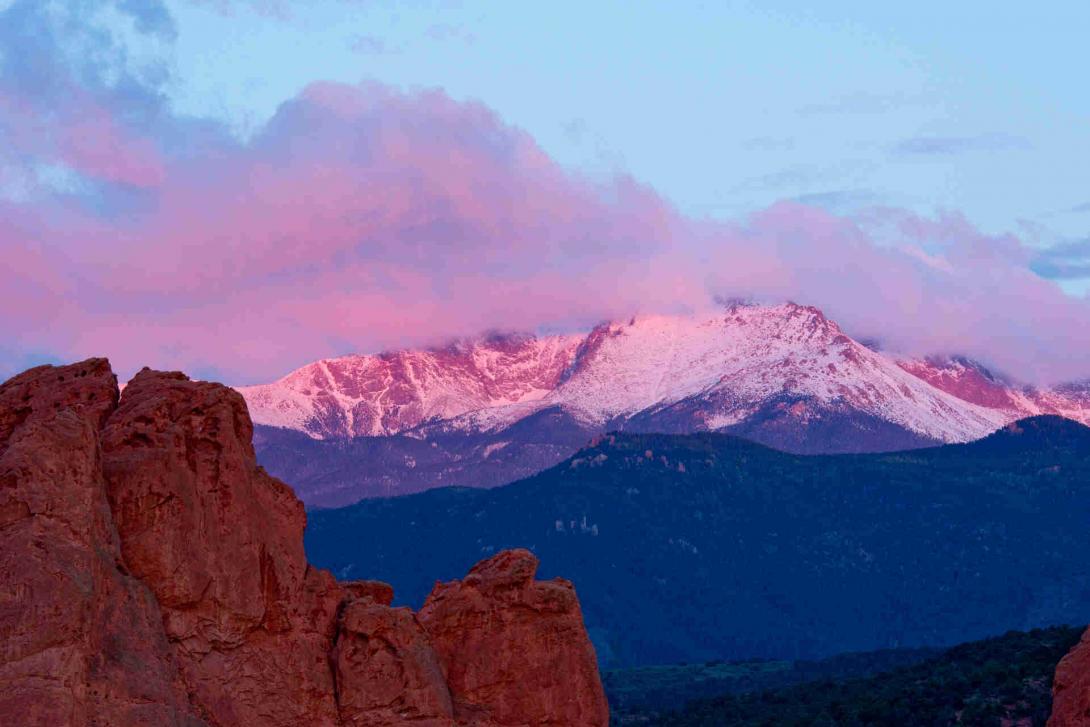 Colorado Springs is the second-most populous city in Colorado, with more than 456,000 residents. Located about sixty miles south of Denver at the base of Pikes Peak, it is the county seat of El Paso County and one of the most popular tourist destinations in the state.
Colorado Springs is the second-most populous city in Colorado, with more than 456,000 residents. Located about sixty miles south of Denver at the base of Pikes Peak, it is the county seat of El Paso County and one of the most popular tourist destinations in the state.
Since it was established by the visionary industrialist William Jackson Palmer in 1871, Colorado Springs has constantly reinvented itself in order to survive multiple economic shifts. Today, the city is home to a robust military community centered on the Air Force Academy and the Army’s Fort Carson, as well as thriving educational and religious communities.
Early Inhabitants
The area of present-day Colorado Springs has a long history of human habitation, beginning almost 5,000 years ago with Paleo-Indian and Archaic-period people who hunted and gathered on the eastern slope of Pikes Peak. By the sixteenth century, the area was home to a group of Ute people who called the mountain Tava, meaning “Sun Mountain,” and referred to themselves as Tabeguache, “the people of Sun Mountain.” Ute people traveled in small bands during the spring, summer, and autumn, but they camped together during the winter on the sites of present-day cities such as Colorado Springs, Denver, and Boulder. The area around Colorado Springs was a prime winter camp because of its location in the piñon-juniper zone (between 5,000 and 7,000 feet of elevation), where the climate is warmer than the valley floors and supports a large variety of plants and animals. Garden of the Gods, for instance, served as a bountiful foraging area.
The Utes, however, were not the only Indigenous people to live along the Front Range. The Comanche and Kiowa frequented the Colorado Springs area during the seventeenth and eighteenth centuries, and by the early nineteenth century the Cheyenne, Arapaho, and Lakota were also present. Unlike the Cheyenne or Lakota, who mostly kept to the plains, the Arapaho routinely traveled to the high country to hunt. They called Pikes Peak by their own name, heey-otoyoo’, meaning “long mountain.”
Old Colorado City
The Colorado Springs area remained the domain of Native Americans until the Colorado Gold Rush of 1858–59, when early white settlers founded Colorado City at the base of Pikes Peak to supply mining camps to the west. When the early gold claims went bust, prospectors helped prevent the city from becoming a ghost town by turning in their pick axes for plows. These early settlers brought seeds and tools, created markets and farms, and built irrigation ditches, all of which helped the agricultural economy in Colorado and New Mexico. However, they also disrupted the Native Americans’ way of life by harvesting timber to build homes and businesses, killing game, occupying the Native Americans’ traditional wintering grounds, and incidentally introducing deadly diseases for which Indigenous people had no immunity.
Founding
In 1867 the Medicine Lodge Treaty paved the way for the removal of the Cheyenne and Arapaho to present-day Oklahoma, while a treaty with the Utes the next year led to their relocation to the Western Slope of Colorado. While Colorado City’s fortunes declined along with those of prospectors farther west, one man arrived with a vision for a city that would be built on much more than gold.
On July 27, 1869, General William Jackson Palmer passed Pikes Peak for the first time. He bathed in Fountain Creek, enjoyed breakfast in Colorado City, and, as he later wrote, “toured that cathedral park of violent reds and deep greens,” known today as Garden of the Gods. Palmer also wrote that he enjoyed “the soda springs at the foot of Ute Pass, the gray-green mesas and grassy valleys of Fountain and Monument Creeks, the deep cool canyons smelling of spruce and pine, and Pikes Peak over all.”
In October 1870, Palmer established the Colorado Springs Company, which was to oversee the sale of property for those joining what he called the Fountain Colony. At a meeting of the Colorado Springs Company, Palmer hired three town site experts, disgruntled officers of the Union Colony farther north: Chief Engineer Edwin S. Nettleton, Secretary William E. Pabor, and Vice President Robert A. Cameron.
The company estimated the townsite’s 2,000 acres could be sold for a total of $540,000; $150,000 would be paid to Palmer’s railroad, the Denver & Rio Grande, while another $150,000 would go toward streets, ditches, trees, parks, and other essential features. The remainder would pay for surveying, platting, wells, administration, and advertising. By the summer of 1871, Cameron, Nettleton, and Pabor had plotted 1,000 acres of lots, streets, and parks. The city of Colorado Springs was officially founded on July 31,1871.
 Palmer’s legacy is found in the 2,000 acres that was given to create Colorado College, the Deaf and Blind School, Cragmor Sanitarium (the modern University of Colorado at Colorado Springs), as well as Acacia, Alamo Square, Antlers, and Palmer Parks. Palmer also gave land to any church that wished to bring its congregation to Colorado Springs.
Palmer’s legacy is found in the 2,000 acres that was given to create Colorado College, the Deaf and Blind School, Cragmor Sanitarium (the modern University of Colorado at Colorado Springs), as well as Acacia, Alamo Square, Antlers, and Palmer Parks. Palmer also gave land to any church that wished to bring its congregation to Colorado Springs.
Palmer’s initial vision of Colorado Springs as a health resort came to fruition during the late nineteenth and early twentieth centuries, as Americans came to see the city—and Colorado more generally—as a haven for those with respiratory illnesses. An early advertisement on the health benefits of Colorado Springs explained that “there have been more permanent recoveries from pulmonary complaints than in any other climate in the world.” This same advertisement explained that recovery from tuberculosis and other conditions was possible in Colorado Springs because there is “comparatively equable temperature; minimum precipitation; low humidity; minimum wind movement; maximum sunshine.”
Early Development
Health facilities helped the city gain an additional 24,000 residents between 1880 and 1910, many of whom went on to be important contributors to the state’s economy and culture.
Colorado Springs became the county seat in 1873, supplanting Old Colorado City. Over the next twenty years, Colorado Springs continued to grow, as books and articles from authors such as Helen Hunt Jackson drew settlers wanting to see the area’s scenic beauty for themselves.
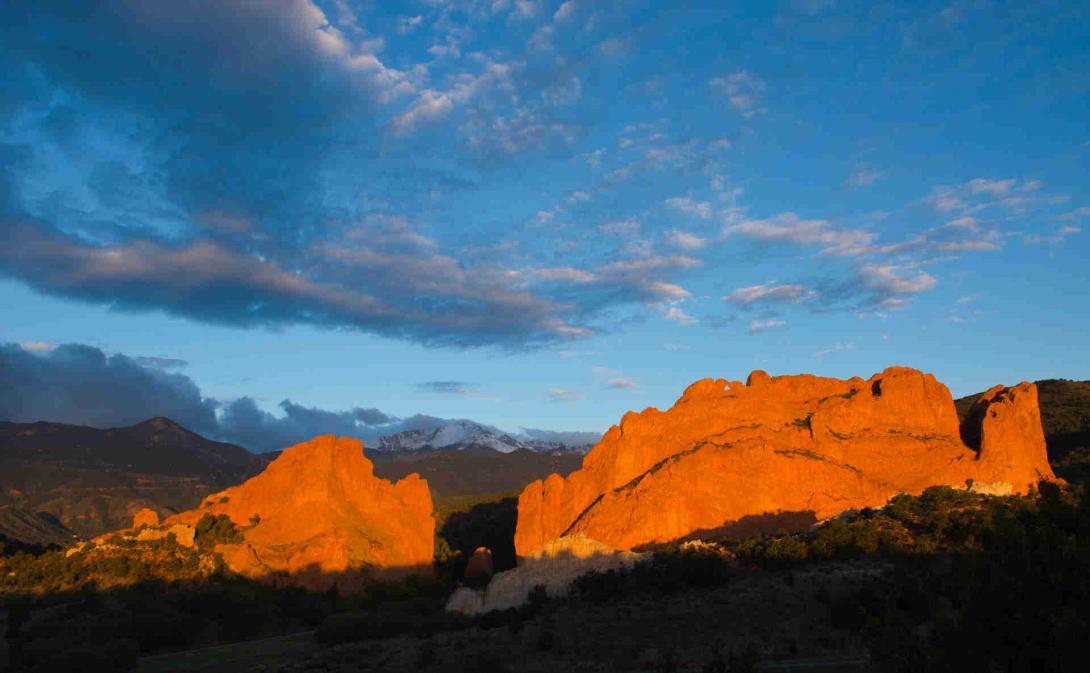 A large fire destroyed much of the downtown business district in 1898, but even that failed to stop the growth of Colorado Springs. In 1903 a new El Paso County courthouse was finished at 215 S. Tejon Street, and in 1917 the city annexed its older neighbor, Colorado City. Even with the broader economic struggles plaguing the United States, bank deposits in Colorado Springs grew 200 percent, from $1.5 million in 1893 to $4.5 million in 1897. Further bolstering the local economy were tourist attractions such as Garden of the Gods—a verdant area marked by giant, sheer sandstone formations—which was donated to the city by the family of Charles Elliott Perkins in 1909, as well as Seven Falls, the Broadmoor Casino, Williams Canyon, Cave of the Winds, Pikes Peak, and others attractions.
A large fire destroyed much of the downtown business district in 1898, but even that failed to stop the growth of Colorado Springs. In 1903 a new El Paso County courthouse was finished at 215 S. Tejon Street, and in 1917 the city annexed its older neighbor, Colorado City. Even with the broader economic struggles plaguing the United States, bank deposits in Colorado Springs grew 200 percent, from $1.5 million in 1893 to $4.5 million in 1897. Further bolstering the local economy were tourist attractions such as Garden of the Gods—a verdant area marked by giant, sheer sandstone formations—which was donated to the city by the family of Charles Elliott Perkins in 1909, as well as Seven Falls, the Broadmoor Casino, Williams Canyon, Cave of the Winds, Pikes Peak, and others attractions.
 As the nineteenth century gave way to the twentieth, Men such as Spencer Penrose, Charles Learning Tutt, Jr., and Charlie MacNeill who had struck it rich in the gold rush used their profits to build the Colorado-Philadelphia Reduction Company plant in Colorado City and the famous Broadmoor Hotel, which opened in 1918. The partnership between Spencer Penrose and Charles Tutt, Jr., also created the Pikes Peak Auto Highway, the Manitou and Pikes Peak Cog and incline railways, and Cheyenne Mountain Zoo, and funded the charitable El Pomar Foundation and the establishment of Colorado College. Penrose’s wife Julie Penrose was instrumental in the creation of the El Pomar Foundation and continued to ensure its viability until her death in 1956.
As the nineteenth century gave way to the twentieth, Men such as Spencer Penrose, Charles Learning Tutt, Jr., and Charlie MacNeill who had struck it rich in the gold rush used their profits to build the Colorado-Philadelphia Reduction Company plant in Colorado City and the famous Broadmoor Hotel, which opened in 1918. The partnership between Spencer Penrose and Charles Tutt, Jr., also created the Pikes Peak Auto Highway, the Manitou and Pikes Peak Cog and incline railways, and Cheyenne Mountain Zoo, and funded the charitable El Pomar Foundation and the establishment of Colorado College. Penrose’s wife Julie Penrose was instrumental in the creation of the El Pomar Foundation and continued to ensure its viability until her death in 1956.
Twentieth Century
Undeterred by economic downturns and natural disasters, Colorado Springs residents kept building on the city’s reputation for innovation and culture. In 1899 Nikola Tesla placed his laboratory on the north side of Pikes Peak Avenue, across from modern-day Memorial Park. While conducting experiments in Colorado Springs, he predicted that knowledge of stationary waves would inevitably produce a world dependent on the wireless transmission of electricity, radio waves, navigation, and radar.
In 1947 Fannie Mae Duncan opened The Cotton Club, a jazz club that Duncan said was “the one place in town where blacks and mixed couples knew they could have a good ol’ time, see the best entertainment, and be treated with the dignity and respect they deserved.” Despite early efforts by the police department to segregate it, the club remained integrated and operated until 1975.
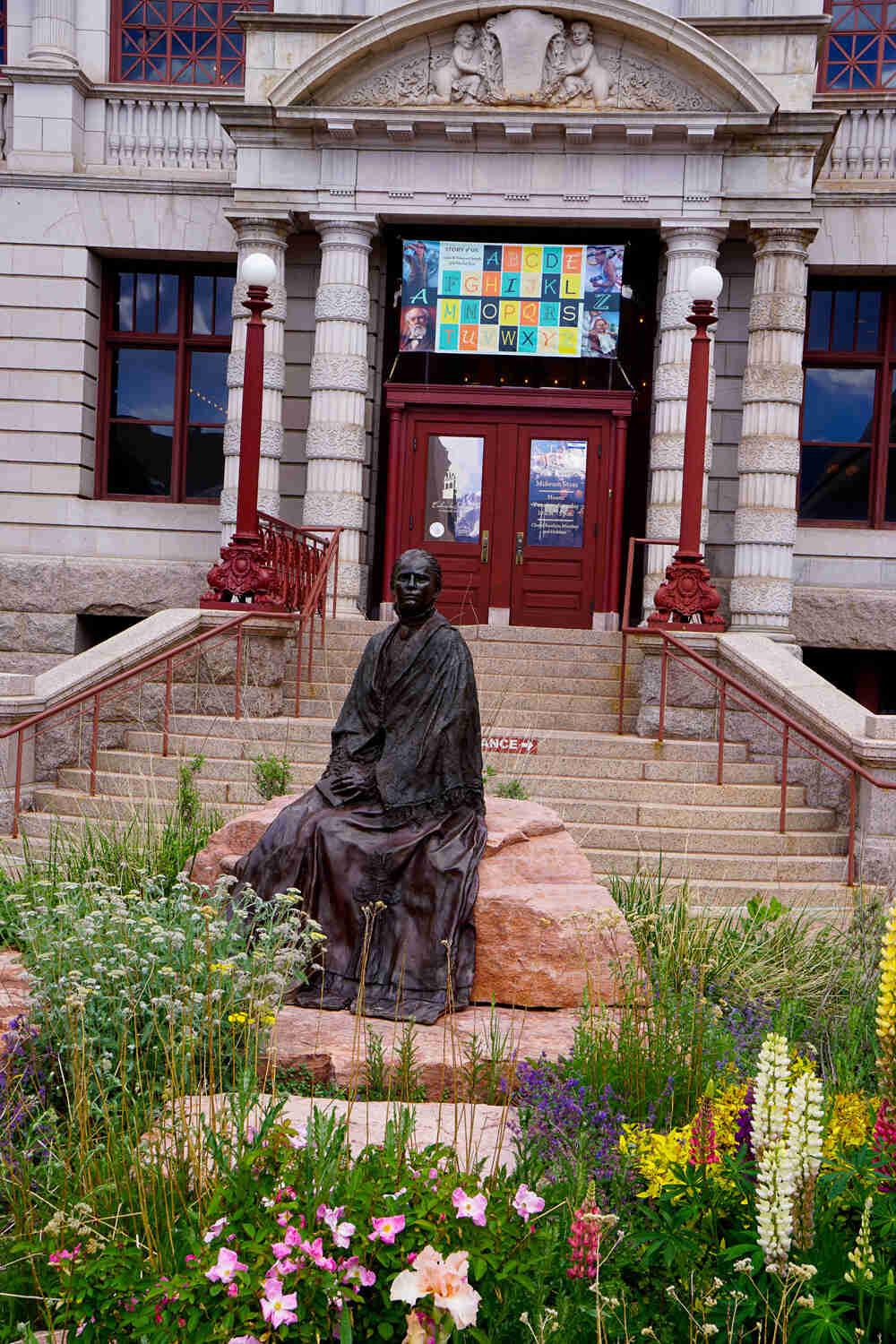 In 1979 the Colorado Springs Pioneers Museum moved into the old El Paso County Courthouse building, giving city trailblazers Palmer, Tesla, and Duncan, as well as the Ute, Arapaho, and others, an institution dedicated to preserving their legacy.
In 1979 the Colorado Springs Pioneers Museum moved into the old El Paso County Courthouse building, giving city trailblazers Palmer, Tesla, and Duncan, as well as the Ute, Arapaho, and others, an institution dedicated to preserving their legacy.
The city’s economy was revitalized during World War II and the Cold War due to the establishment of Fort Carson and Ent Air Base in 1941, Peterson Air Force Base in 1942, Schriever Air Force Base in 1987, the Air Force Academy in 1958, and North American Aerospace Defense Command (NORAD) in 1965. The influx of servicemen and their families expanded the city’s population dramatically; before World War II, Colorado Springs had 36,789 residents, but by 1950 the population had grown to 45,472. The student population, meanwhile, went from 6,500 to 14,000, and the city government grew from 400 to 1,000 employees.
Evangelical Stronghold
In addition to attracting people via military facilities, Colorado Springs has also accumulated a large evangelical Christian presence since the mid-twentieth century. In 1953 the Navigators, an international Bible study ministry, established its headquarters at Glen Eyrie—Palmer’s former estate—northwest of Colorado Springs. In the mid-1980s, charismatic preacher Ted Haggard founded New Life, a megachurch with nearly 10,000 members. In 1991 James Dobson’s Focus on the Family, one of the nation’s most successful and controversial evangelical organizations, moved to Colorado Springs.
While it has helped Colorado Springs grow, the city’s evangelical community has been at the center of multiple controversies over the past several decades, from its support of laws denying rights to same-sex couples to its influence on campus culture at the Air Force Academy.
Today
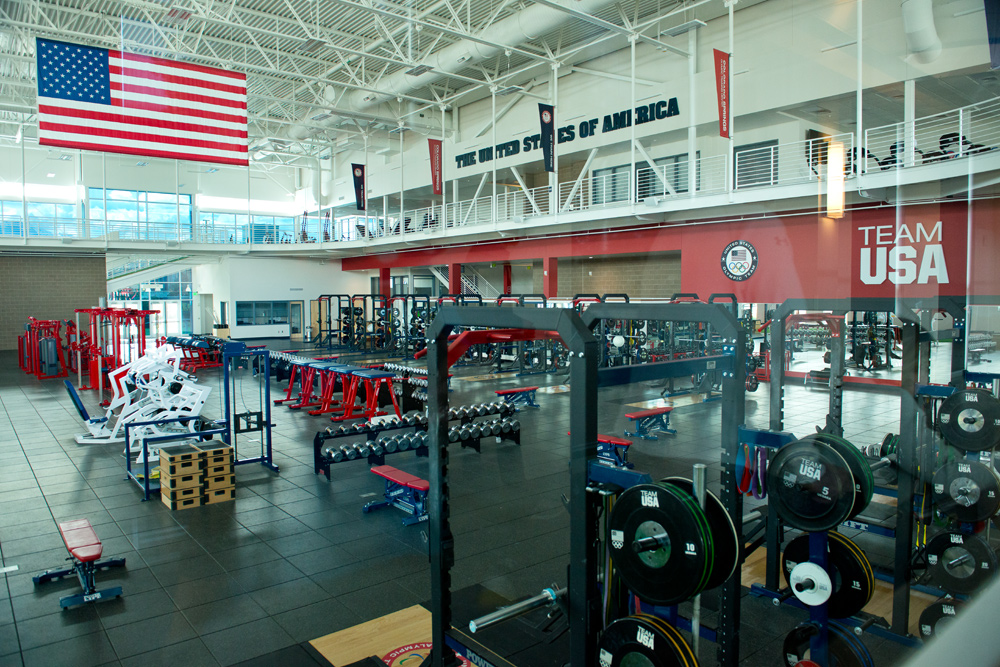 Of course, there is more to modern Colorado Springs than military installations and evangelical groups. On March 7, 2016, the city of Colorado Springs assumed the designation “Olympic City USA,” as twenty-three National Governing Bodies and more than fifty National Sports Organizations have chosen Colorado Springs as their headquarters. Team USA trains at the city’s Olympic Training Center, a thirty-five-acre facility featuring two Olympic swimming pools as well as facilities for athletes training in boxing, cycling, figure skating, shooting, weightlifting, wrestling, and other sports.
Of course, there is more to modern Colorado Springs than military installations and evangelical groups. On March 7, 2016, the city of Colorado Springs assumed the designation “Olympic City USA,” as twenty-three National Governing Bodies and more than fifty National Sports Organizations have chosen Colorado Springs as their headquarters. Team USA trains at the city’s Olympic Training Center, a thirty-five-acre facility featuring two Olympic swimming pools as well as facilities for athletes training in boxing, cycling, figure skating, shooting, weightlifting, wrestling, and other sports.
Today, Colorado Springs is a regional hub, and makes up the southern end of the state’s populous Front Range urban corridor. Tourists from all over the country and the world visit the city to marvel at its natural beauty and learn about its multifaceted and auspicious history.



